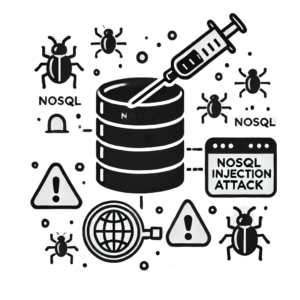What is OWASP?

OWASP is an organization dedicated to making software more secure. They offer resources and guidelines for building websites and applications that are less vulnerable to cyber attacks. Knowing the top 10 security risks identified by OWASP is important for anyone in cybersecurity or app development who wants to keep their work safe from online threats.
The OWASP Top 10 is a list of the top security threats to web applications that is updated regularly. These risks can make applications vulnerable to attacks like hacking, data theft, and bugs that can cause problems. By learning about the OWASP Top 10, you can find and fix these risks before someone tries to take advantage of them.
As a penetration tester or cybersecurity specialist, staying informed about OWASP’s recommendations and best practices is essential for safeguarding your projects and systems. By following OWASP’s guidance, you can enhance the security posture of your applications and contribute to a more secure online environment.
The Importance of Understanding OWASP Top 10
As online threats become more advanced, it’s important for both businesses and regular people to be aware of the latest security risks and ways to protect themselves. The OWASP Top 10 list helps identify the most important security issues for websites and online platforms. By learning about and understanding these vulnerabilities, cybersecurity experts can better safeguard their systems and data from potential attacks.
Understanding the OWASP Top 10 list can help developers create safer apps right from the start. By adding security features early on in the development phase, companies can reduce the chances of data breaches and keep private information safe. Following OWASP guidelines doesn’t just improve security, but also shows customers and partners that their data is being kept secure and trustworthy.
Understanding OWASP’s Top 10 Vulnerabilities
In order to protect against online threats, it’s important to know the main weaknesses that can be exploited by hackers. The Open Web Application Security Project (OWASP) has identified the top 10 most serious risks for website security, such as Injection, Security Misconfiguration, and Cross-Site Scripting (XSS). These vulnerabilities can put web applications at risk of being accessed or manipulated by cybercriminals, exposing sensitive information or causing damage.
Injection attacks are when bad actors send harmful data to a system, causing it to carry out commands that weren’t intended. These types of attacks, like SQL injection, NoSQL injection, and LDAP injection, can be used by hackers to get into a system, mess with important data, and even seize control of a whole application.
Security Misconfiguration, on the other hand, refers to the improper implementation of security controls or configurations that leave applications vulnerable to attacks. This could include default settings, unnecessary services enabled, or failure to apply security patches promptly. Attackers can exploit these misconfigurations to gain unauthorized access, extract sensitive information, or disrupt the application’s functionality.
Cross-Site Scripting (XSS) is a common issue where cyber criminals insert harmful codes into web pages that others are viewing. This permits them to snatch confidential information, takeover user activity, or ruin websites. There are different types of XSS attacks, each with unique threats to online applications. These are stored, reflected, or DOM-based attacks.
It’s really important for organizations to understand and fix these weaknesses in order to keep their websites and user information safe. By following secure coding guidelines, regularly checking for security issues, and staying informed about new online threats, companies can better protect themselves against common website vulnerabilities identified by OWASP.
Insecure Direct Object References (IDOR) is a serious security issue that happens when an app lets users access internal files or databases without permission. This can give hackers the ability to see sensitive information or use features they shouldn’t have access to. It’s a common target for bad actors looking to take advantage of these types of flaws.
Sensitive Data Exposure remains a critical concern in the realm of cybersecurity, as it involves the potential exposure of confidential information such as usernames, passwords, and financial data. This vulnerability often arises from inadequate encryption protocols or insecure storage practices, leaving data susceptible to unauthorized access or interception by threat actors. Implementing robust encryption methods and secure data storage mechanisms is imperative in mitigating the risks associated with sensitive data exposure.
By understanding and addressing vulnerabilities such as Insecure Direct Object References, Security Misconfiguration, and Sensitive Data Exposure as outlined in OWASP’s Top 10 list, organizations can enhance their cybersecurity posture and better protect their assets from potential security breaches.
Additional OWASP Vulnerabilities
When it comes to understanding OWASP’s Top 10 Vulnerabilities, three crucial points to focus on are missing function level access control, cross-site request forgery (CSRF), and using components with known vulnerabilities.
Missing function level access control is a serious security flaw that occurs when an application fails to properly authenticate and authorize user actions. This vulnerability can lead to unauthorized users gaining access to sensitive functions and data within the system.
On the flip side, Cross-Site Request Forgery (CSRF) is a type of attack where a hacker tricks a person into unknowingly taking actions on a website they trust and are logged into. This takes advantage of the website’s trust in the user’s browser, which can result in harmful outcomes.
Using components with known vulnerabilities is another common issue in cybersecurity. It involves incorporating outdated or vulnerable third-party components into an application, leaving it exposed to potential attacks and exploits.
By taking action to fix weaknesses and setting up strong security measures, companies can prevent cyber attacks and keep their information safe.
Unvalidated Redirects and Forwards
Unvalidated Redirects and Forwards is a common security issue that can make websites and web applications vulnerable to attacks. This issue happens when a website sends you to a different page without checking if it’s safe. Hackers can take advantage of this by tricking you into clicking on a link that seems harmless, but actually takes you to a harmful website or steals your information.
Understanding OWASP’s Top 10 Vulnerabilities is crucial for cybersecurity professionals and developers to effectively secure their applications. OWASP, the Open Web Application Security Project, identifies and raises awareness about the most critical security risks facing web applications today. By recognizing and addressing vulnerabilities like Unvalidated Redirects and Forwards, organizations can mitigate risks and strengthen their overall security posture.
Using proper validation checks, cleaning up input data, and following secure coding practices are important steps to protect against Unvalidated Redirects and Forwards attacks. Regular security evaluations and penetration tests can also help find and fix vulnerabilities before attackers can take advantage of them.
Protecting Against OWASP Top 10 Vulnerabilities
Injection and Cross-Site Scripting (XSS) attacks are some of the most common cyber threats according to OWASP’s Top 10 Vulnerabilities list. These attacks can cause serious problems for companies, such as data leaks, unauthorized access to important information, and potential financial harm.
In order to protect against Injection attacks, it’s important for organizations to follow safe coding practices, validate inputs carefully, and use parameterized queries. This helps reduce the chances of harmful code getting into databases. Additionally, to safeguard against XSS attacks, it’s recommended to clean up user inputs, set up a Content Security Policy (CSP), and encode data to prevent malicious scripts from running on websites.
By learning about these weaknesses and putting strong security measures in place, companies can protect their systems and data from potential breaches. It is important to regularly check security, train employees, and use web application firewalls to help guard against Injection and XSS attacks.
Adopting Robust Security Configuration
When it comes to understanding OWASP’s Top 10 Vulnerabilities, adopting a robust security configuration is paramount. By following best practices and staying informed about the latest security threats, organizations can significantly reduce their exposure to cyber threats. OWASP’s Top 10 list serves as a valuable guide for identifying and addressing the most critical security risks facing web applications today. Implementing secure configurations across networks, servers, and applications can help prevent common vulnerabilities such as injection attacks, broken authentication, and sensitive data exposure. Proactively configuring security settings and regularly auditing systems for compliance with industry standards are essential steps in fortifying defenses against potential cyber attacks. By prioritizing security configuration, businesses can strengthen their overall cybersecurity posture and safeguard sensitive information from malicious actors.
In summary, it’s important for every organization to know about the top security risks outlined by OWASP in order to protect their applications and data. By understanding things like injection attacks, weak passwords, and exposing sensitive information, companies can take steps to prevent these threats. Keeping software up to date, teaching employees about security, and regularly checking for vulnerabilities are all crucial ways to stay safe from cyberattacks. Be aware, stay informed, and make cybersecurity a priority to keep your digital information secure from hackers.
“`
